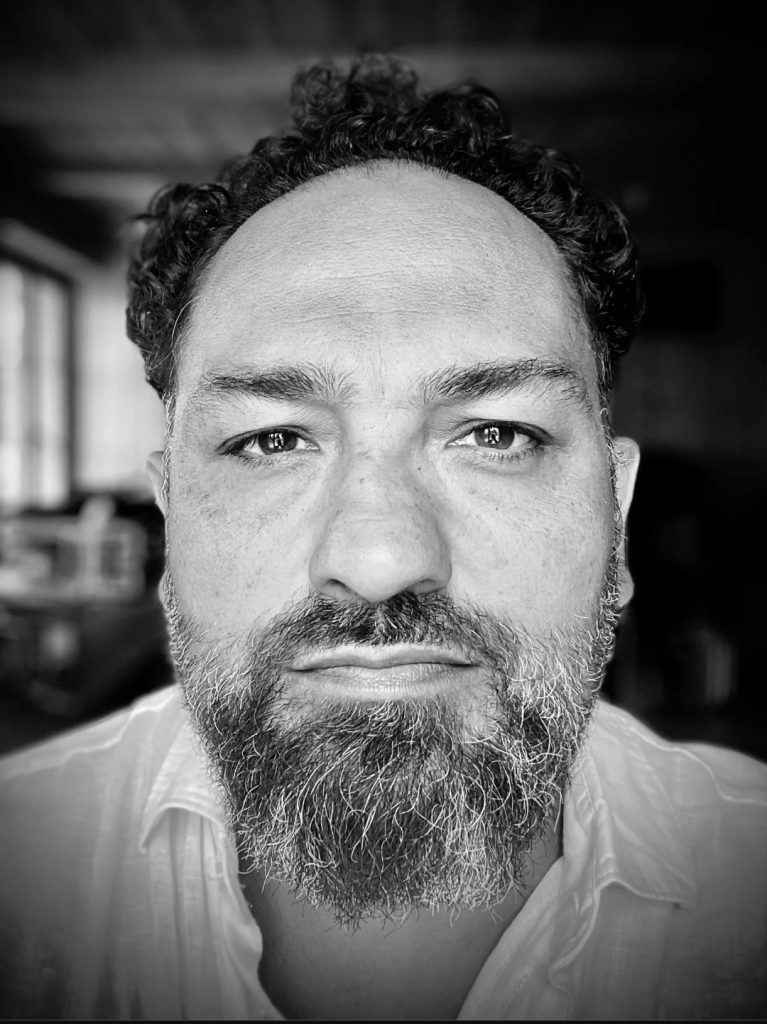
This week’s interview brings us to Zurich, Switzerland, and to a very talented maker Dimitri Turcott. I’ll admit, there are times that I see the name that a knife maker chooses for his brand, and I give it no thought. That was the case with Studio Blade; however, after conversing with Dimitri I am now convinced that not only is it an appropriate name, but it is also very telling. I am excited to share this conversation with you.
To start off, tell me a little bit about yourself.
I was born in Mexico, my father was Mexican and my mother was Belgian. She came to Mexico for University and met my father, and that is where I came into the picture. They stayed in Mexico until I was six and then we moved to Belgium. Most of my life was spent in Belgium. I ended up studying music. I was a professional guitar player, at first being a studio player, and then shifting into audio engineering. I would do a lot of concerts, but I also liked to go backpacking in the woods. High quality knives were not something I could afford so I slowly started making my own knives. After a while it changed from being only a hobby. I started selling some, and thought I might be onto something.
When did you start making knives?
I really caught the makers movement at the right moment. It was before Forged in Fire, and I was doing quite well with it as a part time job. I kept going like that for quite a while, until a few years ago when I decided to really invest into some good equipment. And then I moved to being a full-time maker, but I still occasionally do audio engineering work.
How has your approach to knife making changed?
I have become much more focused on the design process. I started out in the dark ages, forging knives, and now I have moved into the 21st century. I create a design on my computer and then make prototypes with a 3d printer. I cut blades with a waterjet and make handles with a router-based CNC machine. So, things have come a long way. I select steels for their performance, mostly stainless, and often use cryogenic treatment. Yeah, I have come a long way.
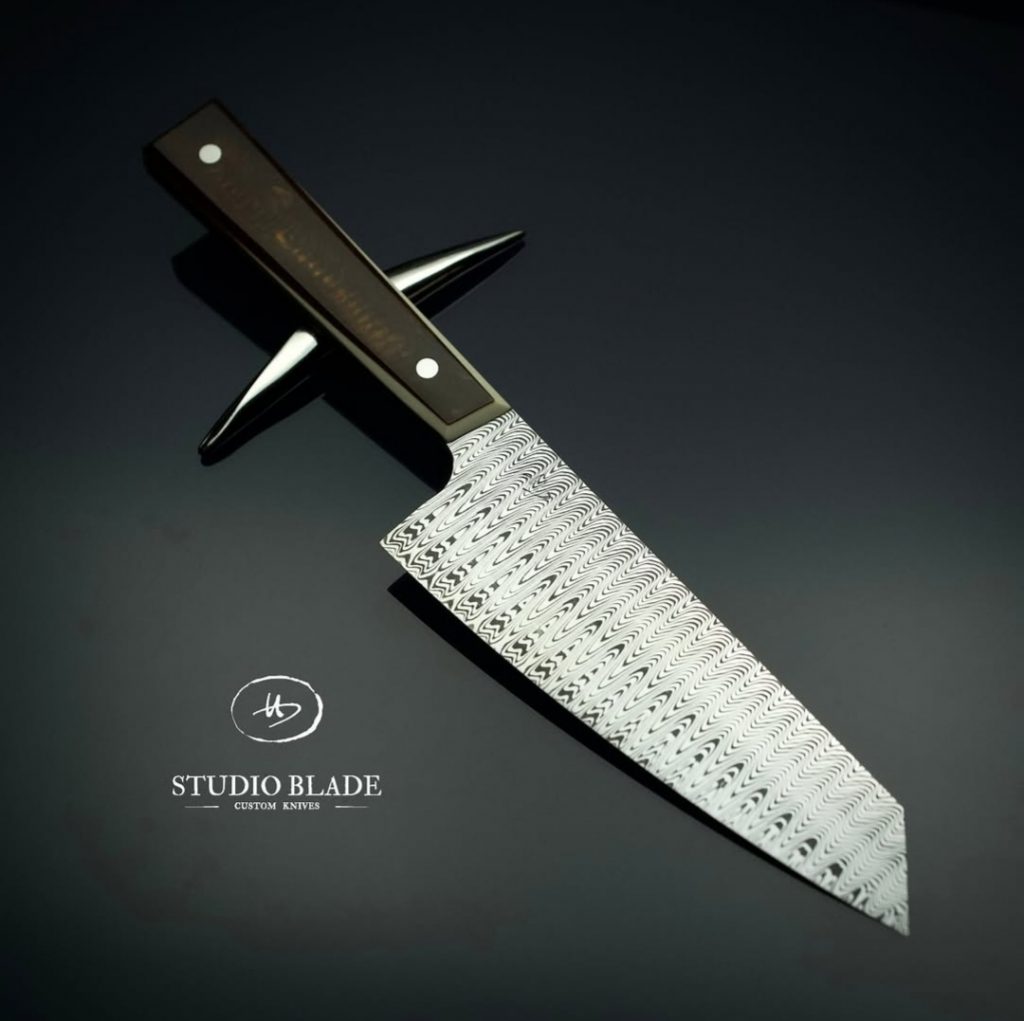
It seems your approach to knife design mirrors sound engineering to an extent?
Yeah absolutely, I have never thought of it like that. But I am a perfectionist, and when you are a sound engineer you dissect every little detail, and that is why I don’t really forge too much anymore. I can get a lot more control over variables with my 3d modeling, and so on. I can control every tenth of a millimeter, and that’s very important. And that is why I prefer to focus on making specific models of knives rather than one off custom work.
When I approach a new model, it takes 2-3 weeks to really define every curve, to ensure it is functional, ergonomic, and comfortable in hand. When I am happy with the model, then I will make a batch of it.
What is your approach to testing, or refining a particular model?
I have gained a lot of experience and knowledge of how knives work, so now I can use that expertise to make a really great knife for my customers, rather than relying on the customer to make those choices. I mean sure, if they are a hunter or a professional chef, they may have preferences that I can learn from and improve my designs. I am always looking to make improvements, after I have finished a design, I will return to it later and will look for incremental changes that will improve it. So, my models do evolve as I find ways to improve them over time.
What does that look like?
Sometimes I will make changes based on feedback from a client, and other times I will adjust if I feel it enhances the aesthetics. For example, I had a bush craft knife that 95% of my customers were happy with, but then I started working with some professional bush craft instructors who told me that they had just lost a knife because it fell out of the sheath. So, I knew I needed to adjust the design of my sheath to prevent knives from falling out.
I also wanted to meet the needs of a traveling chef. You know they will need protective when they are transporting their knives, so making sure something like that is available can influence whether or not to purchase a knife, it doesn’t have to be completely about the knife itself.
I also love stabilized woods, but when it comes to durability and performance, g10 and other modern materials are great. You don’t have to worry about them at all.
The same goes for carbon steel vs. stainless steel. I really do love carbon steel but having to remind customer how to properly maintain it is a challenge. I would get hunters who would say that they knew lots about knives, they would get carbon steel and then come back a few weeks later with a damaged blade. So now I like to ask, customers: If you were out hunting in the rain, when you got home would you put everything in a pile until you needed it again, or are you the kind of person who would clean and oil their rifle before putting it away. The way that they answer that question will tell me whether or not I am going to recommend a carbon steel knife for them.
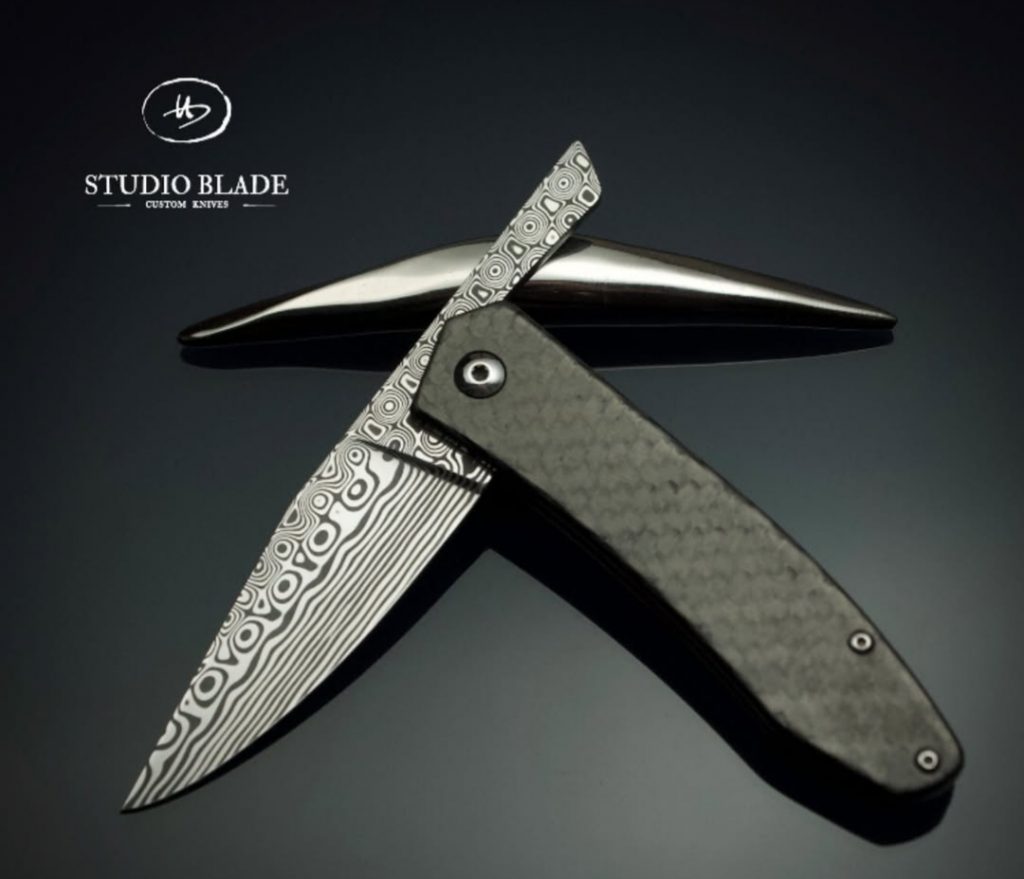
What did you make your first knife out of?
I found out at a young age that not all steels are created equal, I made my first knife out of old car springs, and that’s when I learned that cars also had many different quality levels of steels in them. The first one was made one out of a Mercedes spring and it was really good. Then I got some from a French car, and the steel was not as good, so I knew I needed to make sure I was using good steels.
Do you have a favorite knife you have made?
It is always the latest knife I am working on.
Is there a perfect knife?
I don’t know. You can always keep tweaking your design, which is part of why I have become so focused on the design side. I am a creative person, probably because of being a musician but I can get totally engrossed in a design trying to fine tune it over a few days. I don’t like making the same knife over and over. I love the prototyping. Thats where the fun is at. I also believe it is important to do everything three times. The first time you’re getting the feel for it, the second time you can see what needs to be improved on, and then the third you can see how it has improved.
Hopefully you don’t get married three times….
Hahaha, I don’t want to go through that.
When you were starting out, how did you learn?
I was self-taught, there weren’t too many people doing it. Even the blacksmiths at the time, they kind of looked down on you, if you were only a knife maker. Every time I took a blacksmithing class, they wanted to teach me how to forge flowers, or loops. And if you asked questions related to knives, you didn’t get much information. But Forged in Fire really changed all of that. Then knife making became very popular.
It certainly became something lots of people knew about.
I was actually invited to do Forged in Fire, but I declined because as a sound engineer, I worked a lot with television. So, I knew the format, and it’s really more about emotions, and less about the intrinsic art of making knives. You know it’s reality tv, and so that wasn’t really a fit for me. I did participate in a European documentary that discussed more about the substance of what I do, and I enjoyed that.
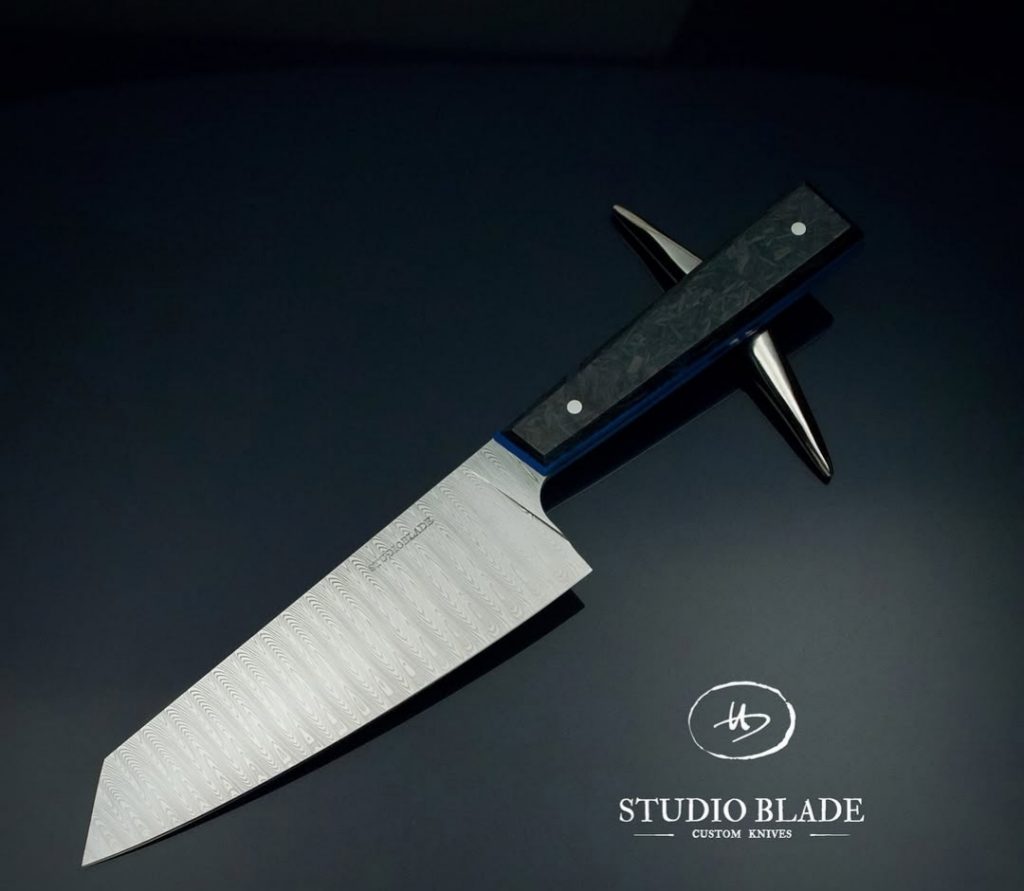
Any influences or inspirations for your work?
I am really inspired by trying modern approaches, and new technologies that are being introduced. I don’t need to be filing a knife late at night anymore. Plus, I like to be as precise as possible. But even with these technologies, there is still plenty of manual work, when it comes to finishing, polishing and so on. But if I have modern tools available, I want to use them.
Since I started out forging knives. It took many years to learn the craft, and then I started getting into the design. But I think if your background was in design, then when you start making knives you will focus on aesthetics first. But since I started out banging around on springs, now that I am focusing on design more, I am finding my style. I still have all of those skills, because I have done it all by hand, then when I am doing a 3d model I am able to translate what is on the screen and understand how it would function in a physical form. So that experience has helped me a lot.
So, tell me more about how you approach making a new design/model?
It grows organically, I have a basic idea, I know certain parameters I will work within, then I start with a pencil sketch. Once I am happy with the sketch, I can scan it into the computer and turn it into a digital model. After that I will 3d print it so I can hold it, and see how comfortable it is, how the handle is, then I can go back and tweak the design.
For example, I am working on a folding knife that doesn’t have a locking mechanism, as there have been changes to what is allowed in Germany, and Italy and will be changing in Austria too. So, there is a large market for non-locking folders. And making a 3d printed model has helped me make sure of what adjustments I need to make before I commit to making a batch of them.
How do you determine what adjustments need to be made?
First, I find the particular steels that I like for different applications, and then I will play with the edge geometry. I know hunters can be brutal on their knives, so I leave those models thicker behind the edge. But for kitchen knives you need to go thinner. Once I have a model, I test it out for a couple weeks. Or sometimes I will give them to hunters or chefs and have them test them out and give me feedback on how I can improve the design.
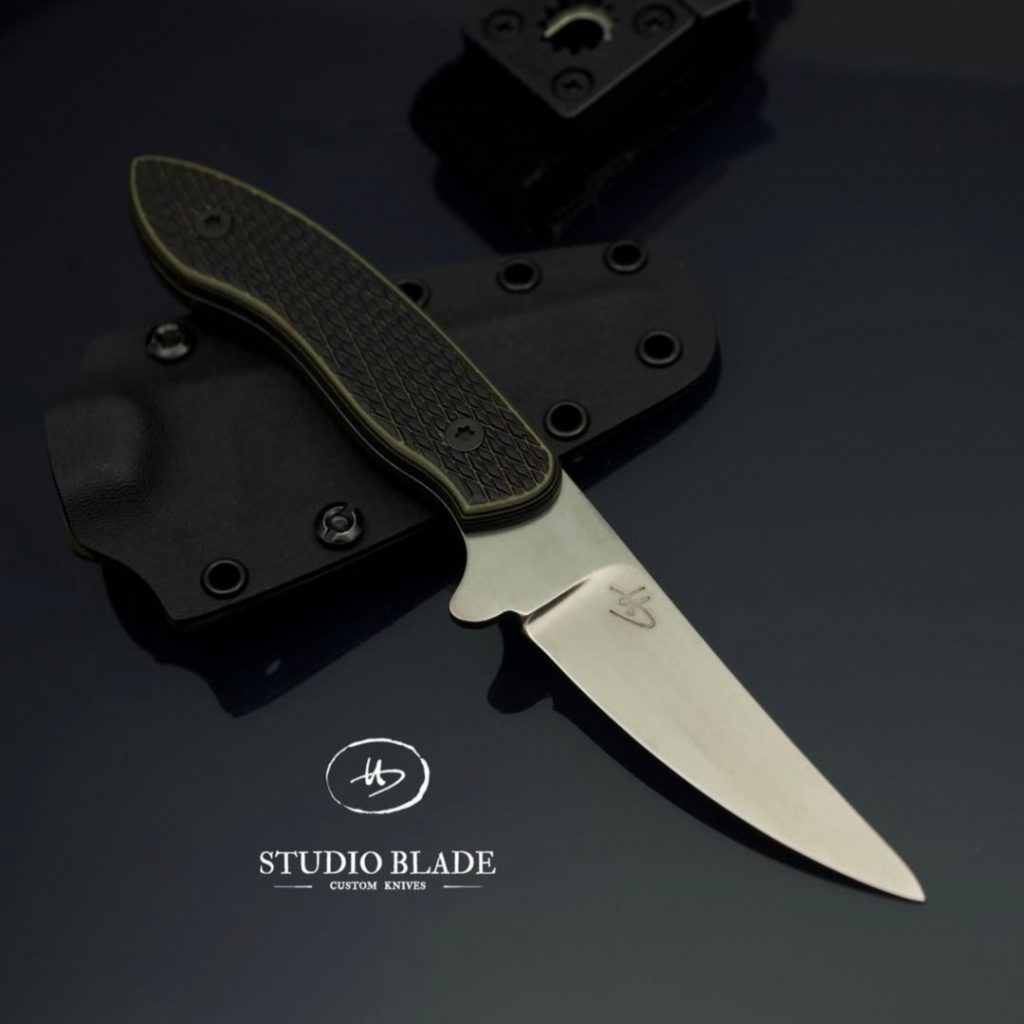
So, what are your favorite steels?
For luxury knives I like Damasteel. I like Elmax for hard working outdoor knives. I also like some simple steels; for stainless 14c28n and for carbon 80crv2. I have tried Magnacut, but it is very expensive to get here. However, the reality is, once you get to high end steels they are all quite good. So, once you have a quality steel, then edge geometry and heat treatment become the most important aspect.
I try to use steels that don’t require frequent sharpening. They may be more wear resistant, but just use diamond stones, they get the job done, and you don’t have to stop what you are doing to sharpen all the time.
My thought is if having the sharpest knives is important to you, then you should invest in the proper tools to keep them sharp. But I also understand some people really enjoy sharpening, using natural stones and so on, and then a simpler steel like 80crv2 is going to be better for them.
Any news, or projects you want to share?
Well, I just wrapped up a Kickstarter, where I launched a new model called The Rambler. It is a production knife, but I kept all the manufacturing in Europe, which was very important to me. The last batch just came back from the factory in Italy, and they are now available on my website. So that is exciting. The inspiration came from a hunting knife, the blade shape is very small, not a classic drop point, so the profile lets you do more precise cutting work. And while it is certainly a great outdoor knife, it can also be used as an office knife or petty knife, and can even be used to clean, scale, filet fish.
I would also in the future like to make an outdoor knife version of a kitchen knife. I love cooking and the outdoors, so that idea has been in my head for a while.
I think the question everyone wants to know, since you have lived in all three countries, do you prefer Mexican, Belgian or Swiss food?
That is easy. I like Mexican food the best. I also love Italian and Korean food. The last time I was in Atlanta for the Blade Show, Tre from 3rd Hill took me to a Mexican Korean restaurant. I was like, What? This is perfect for me.
Swiss food is pretty mild, not too challenging all the restaurants serve the same things: Rosti, Cordon Bleu, Fondue, raclette, schnitzel, a lot of cheese, a lot of spaetzle.
I personally love trying to combine different types of cuisines; however, there are some where it is difficult to picture how they would work together. I think Swiss and Mexican is great example. They are just so different. So, for fun, in honor of your interview, I am going to challenge myself to make a Swiss/Mexican fusion recipe I think that should be a fun challenge.
I look forward to seeing that.
To keep up to date, and see more of his work, head over to his website http://www.studio-blade.com or check out his Instagram https://www.instagram.com/studio_blade/
2 responses to “Studio Blade”
-
The text has an almost painterly effect, colors and shapes emerging through language. Each description feels vivid without overwhelming, guiding the reader’s imagination gently.
-
Thank you for the kind words
-
Leave a Reply